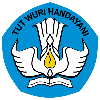Perancangan Sistem Informasi Manajemen Keuangan Berbasis Web Untuk Kafe Kopi Sakura Dengan Metode Prototipe
Kata Kunci:
Sistem Informasi Keuangan, Manajemen Keuangan, Metode Prototype, Black Box Testing, Perancangan SistemAbstrak
Penelitian ini membahas tentang penerapan metode prototipe dalam perancangan sistem informasi manajemen keuangan berbasis website dengan fokus pada Kafe Kopi Sakura. Permasalahan yang terjadi pada Kafe Kopi Sakura adalah kesulitan dalam mengelola keuangan yang masih manual dan mengakibatkan menurunnya tingkat efektivitas dan efisiensi kerja serta berdampak buruk pada kinerja karyawan nya seperti mudah stress dan turunnya semangat kerja. Tujuan penelitian adalah untuk merancang sistem informasi manajemen keuangan berbasis web untuk Kafe Kopi Sakura yang dapat diakses melalui website sehingga dapat meningkatkan efisiensi dan efektivitas dalam pengelolaan keuangan. Metode prototipe digunakan dalam merancang sistem informasi manajemen keuangan dengan membuat rancangan atau proses kerja dari produk. Penelitian ini menghasilkan sistem yang terbukti dapat membantu pengelolaan keuangan Kafe Kopi Sakura. Berdasarkan hasil pengujian menggunakan User Acceptance Test dengan teknik black box testing didapatkan nilai menggunakan confusion matrix sebesar 87,8% sehingga dapat dinyatakan bahwa sistem dapat menjadi solusi yang tepat bagi pengguna.
Unduhan
Referensi
E. W. Fridayanthie, H. Haryanto, and T. Tsabitah, “Penerapan Metode Prototype Pada Perancangan Sistem Informasi Penggajian Karyawan (Persis Gawan) Berbasis Web,” Paradigma - Jurnal Komputer dan Informatika, vol. 23, no. 2, Sep. 2021, doi: 10.31294/p.v23i2.10998.
A. A. Kusuma, “Perancangan Sistem Informasi Manajemen Keuangan Menggunakan Metode Scrum (Studi Kasus: CV Kurnia Jaya),” 2021.
D. Afni, & Firman, and N. Hasan, “Rancang Bangun Sistem Informasi untuk Toko Online Berbasis Aplikasi Android,” vol. 6, p. 2021, 2021.
P. E. Sudjiman and L. S. Sudjiman, “ANALISIS SISTEM INFORMASI MANAJEMEN BERBASIS KOMPUTER DALAM PROSES PENGAMBILAN KEPUTUSAN.”
Rini Purnamasari, “Determinan Goal-Setting terhadap Kinerja Pegawai Pengelola Keuangan,” Journal of Management and Bussines, vol. Vol.2, no. No.1, pp. 165–176, Jun. 2019.
G. Makatengkeng et al., “PENGARUH SARANA PENDUKUNG SISTEM INFORMASI AKUNTANSI, SISTEM PENGENDALIAN INTERN PEMERINTAH DAN BUDAYA ORGANISASI TERHADAP KINERJA PEGAWAI PENGELOLA KEUANGAN PADA SEKRETARIAT DAERAH KABUPATEN KEPULAUAN SANGIHE.”
R. Arista and N. Nurlaila, “PENGARUH SISTEM PENCATATAN LAPORAN KEUANGAN TERHADAP OPTIMALISASI KINERJA KARYAWAN PADA PERUSAHAAN UMUM DAERAH (PUD) PASAR KOTA MEDAN,” SIBATIK JOURNAL: Jurnal Ilmiah Bidang Sosial, Ekonomi, Budaya, Teknologi, dan Pendidikan, vol. 1, no. 5, pp. 585–594, Mar. 2022, doi: 10.54443/sibatik.v1i5.66.
G. Enstayn, A. Kustanto, H. Prillysca Chernovita, and P. Korespondensi, “PERANCANGAN SISTEM INFORMASI MANAJEMEN BERBASIS WEB STUDI KASUS : PT UNICORN INTERTRANZ WEB-BASED MANAGEMENT INFORMATION SYSTEM DESIGN CASE STUDY: PT UNICORN INTERTRANZ”, doi: 10.25126/jtiik.202184849.
S. D. Nabella, “ANALISA LAPORAN ARUS KAS SEBAGAI ALAT UNTUK MENILAI KINERJA KEUANGAN PERUSAHAAN PT KIMIA FARMA TBK”, doi: 10.33373/bening.v8i2.3654.
N. Renaningtias and D. Apriliani, “PENERAPAN METODE PROTOTYPE PADA PENGEMBANGAN SISTEM INFORMASI TUGAS AKHIR MAHASISWA,” 2021. [Online]. Available: http://ejournal.unib.ac.id/index.php/rekursif/92
F. Fenando, P. Studi, S. Informasi, F. Sains, and D. Teknologi, “Implementasi E-Commerce Berbasis Web pada Toko Denia Donuts Menggunakan Metode Prototype Universitas Islam Negeri Raden Fatah Palembang-Indonesia,” vol. 6, no. 2, pp. 66–77.
C. A. Pamungkas and P. A. Raharja, “RANCANG BANGUN LEARNING MANAGEMENT SYSTEM BERBASIS CODE IGNITER MENGGUNAKAN METODE PROTOTYPE,” JSiI (Jurnal Sistem Informasi), vol. 9, no. 2, pp. 215–220, Sep. 2022, doi: 10.30656/jsii.v9i2.5276.
A. Rohmadi and V. Yasin, “PADA CV APICDESIGN KREASINDO JAKARTA DENGAN METODE PROTOTYPING.” [Online]. Available: http://journal.stmikjayakarta.ac.id/index.php/jisicomTelp.+62-21-3905050,
E. Suprapto, “User Acceptance Testing (UAT) Refreshment PBX Outlet Site BNI Kanwil Padang,” Jurnal Civronlit Unbari, vol. 6, no. 2, p. 54, Oct. 2021, doi: 10.33087/civronlit.v6i2.85.
N. W. Rahadi and C. Vikasari, “Pengujian Software Aplikasi Perawatan Barang Milik Negara Menggunakan Metode Black Box Testing Equivalence Partitions,” Infotekmesin, vol. 11, no. 1, pp. 57–61, Jan. 2020, doi: 10.35970/infotekmesin.v11i1.124.
Unduhan
Diterbitkan
Cara Mengutip
Terbitan
Bagian
Lisensi
Hak Cipta (c) 2024 Prosiding Seminar Nasional Teknoka

Artikel ini berlisensiCreative Commons Attribution-NonCommercial-ShareAlike 4.0 International License.






 Supported by :
Supported by :


